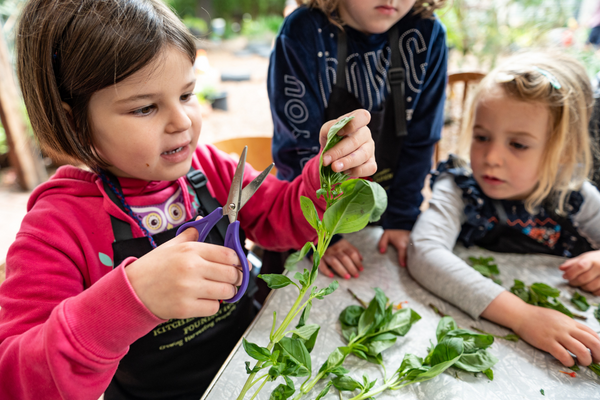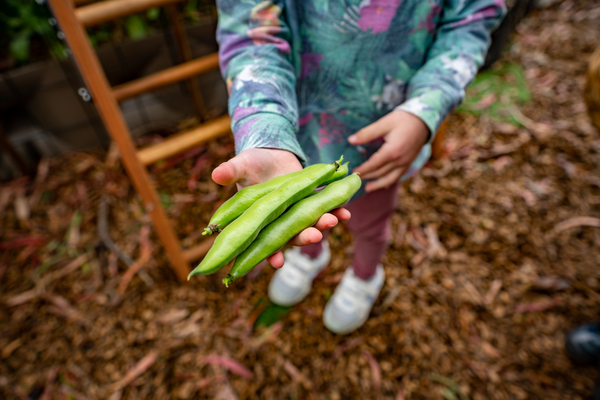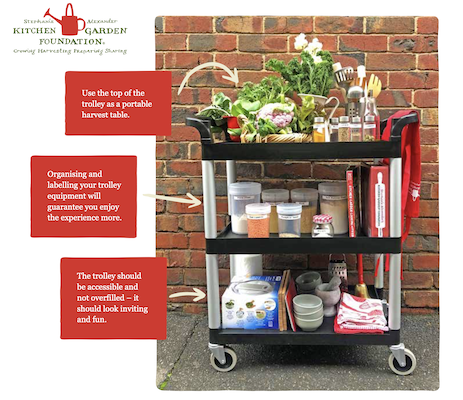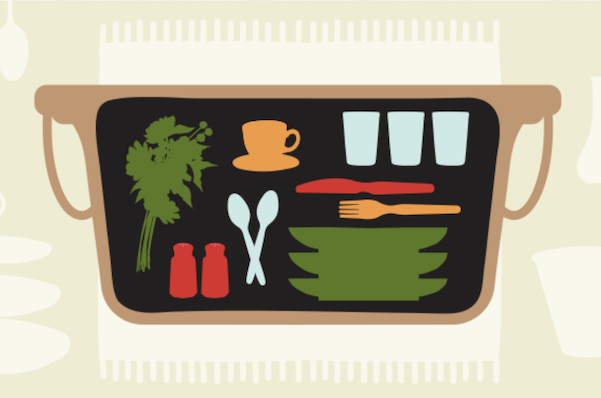Grow your kitchen garden on a budget

The benefits of running the Kitchen Garden Program are enormous, but the set-up costs don’t have to be. Our number one recommendation is: start small and dream big.
There are plenty of early childhood services who have started from scratch with less than $5000. Throw in some community fundraising and donations from local businesses and you’ll be raring to go.
Kitchen Garden Programs don’t have to be arduous or cumbersome and they don’t have to be huge.
If you’ve got herbs on a windowsill and you are using those in creating dishes or offering sensory experiences, that’s the start of a Kitchen Garden Program. If you’ve got a row of garden tubs growing three or four different things,
then that’s a productive kitchen garden. Your setting and available resources will shape what your program looks like and how it evolves over time. –Kitchen Garden Educator

In the garden
Starting small means your community will be able to learn as your garden grows. Kick things off with a few pots or small beds while you plan a larger garden. You’ll be amazed at what’s already in your space – take a moment to have a look and plan.
Some essentials could include:
- Soil, mulch, fertiliser
- Pots of all sizes
- Garden beds
- Seedlings and seeds
- Watering cans
- Hand tools: trowels, weeders, forks
- Spray bottles
- Stakes for tall plants
- Scissors
- Buckets
- Garden twine
Work towards:
- Raised garden beds/wicking beds
- Garden tools or shed
- Greenhouse
- A simple irrigation system
- Worm farm/composting bins
- Chicken coop and chickens
- Retaining walls or outdoor seating and fencing
- Wheelbarrow

A kitchen trolley can provide simple but meaningful kitchen experiences
In the kitchen
Once you are growing and harvesting fresh, seasonal produce, the next step is finding somewhere to prepare it!
We understand that each service is unique and some kitchen spaces are not appropriate or accessible for children, but nothing is impossible: some services convert learning areas and outdoor environments into temporary kitchens, creating a flexible kitchen space.
A number of early childhood services use our kitchen trolley and dining tub approaches to make the most of limited resources. And some of the best experiences come from children enjoying produce straight from the garden, with no prep required. Many services do not have a big kitchen – or any at all. The kitchen trolley allows educators and team members to move easily from room to room with minimal preparation and set up. It’s an achievable alternative to the ‘classic’ kitchen, and has been adopted successfully in early childhood services Australia-wide.
The wonderful ritual of sharing a meal you have prepared is important, but many services don’t have a space that is separate or big enough to use as a dining area. The dining space tub gives children the opportunity to share food together in a variety of educational settings, no matter what size and space is available.

A dining space tub makes shared meals easy
Connect with community
Think about how your community can provide support. Check if your council has a seed bank, or can provide compost and mulch for free. Ask local nurseries or hardware stores if they can donate soil, fertilisers, growing beds, tools, or even an irrigation system. See if local families or gardening groups can help with equipment or donate their time or knowledge.
Kitchen gardens are a site for social cohesion – building your program is a great way to bring people together.
To find out more about a Kitchen Garden Program membership, visit the membership page or talk to the team: 1300 072 543, membership@kitchengardenfoundation.org.au.
< Back to Latest News
